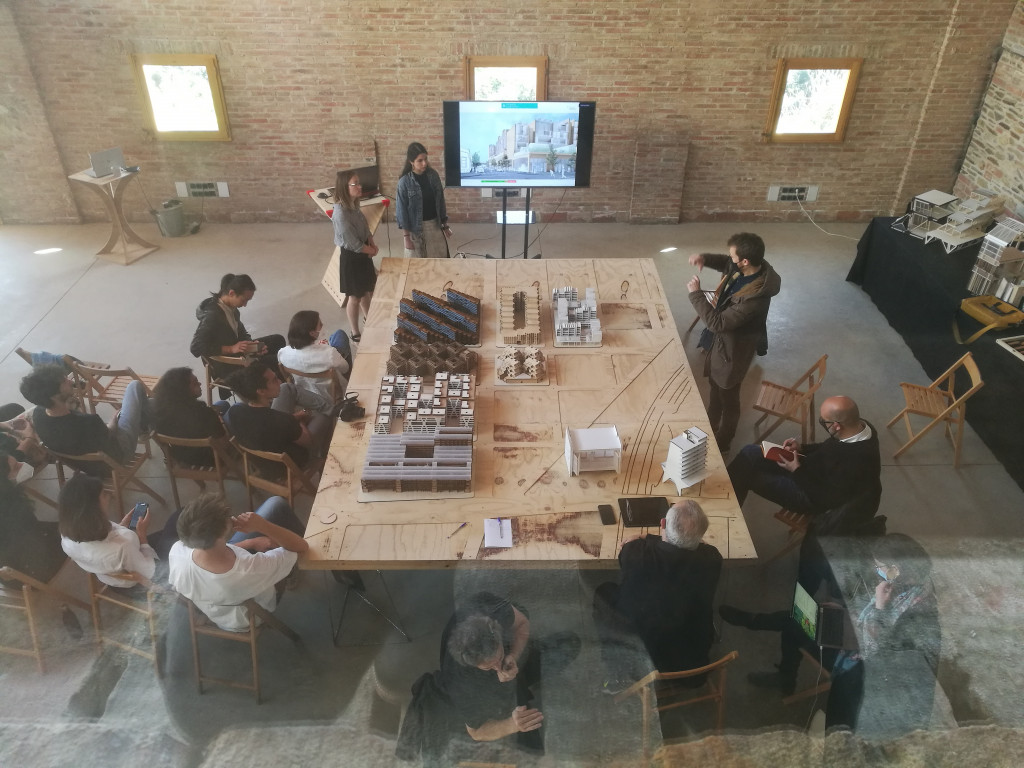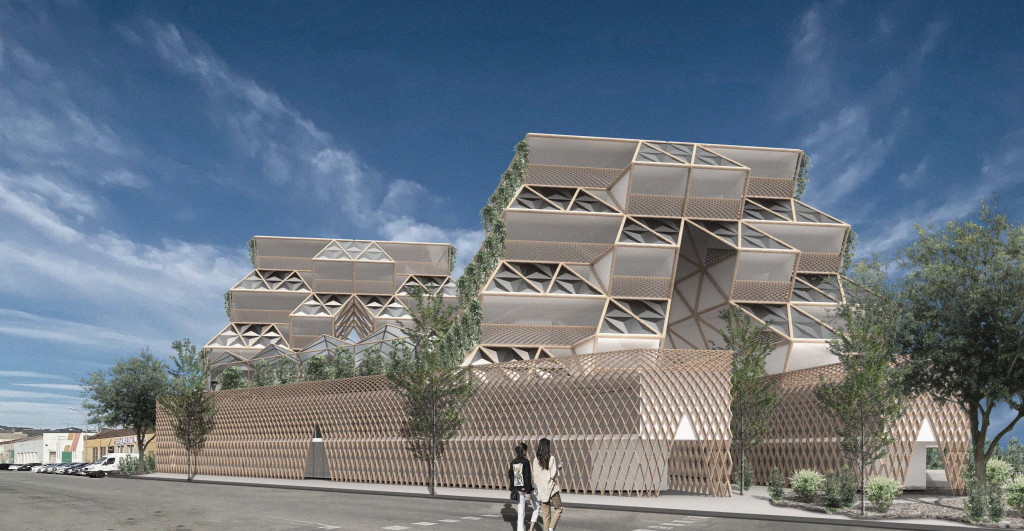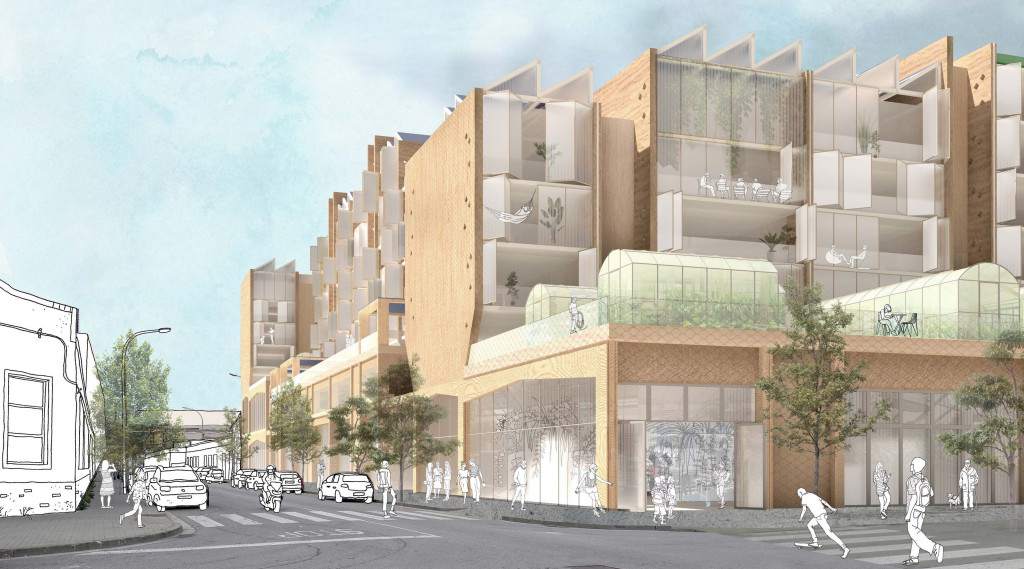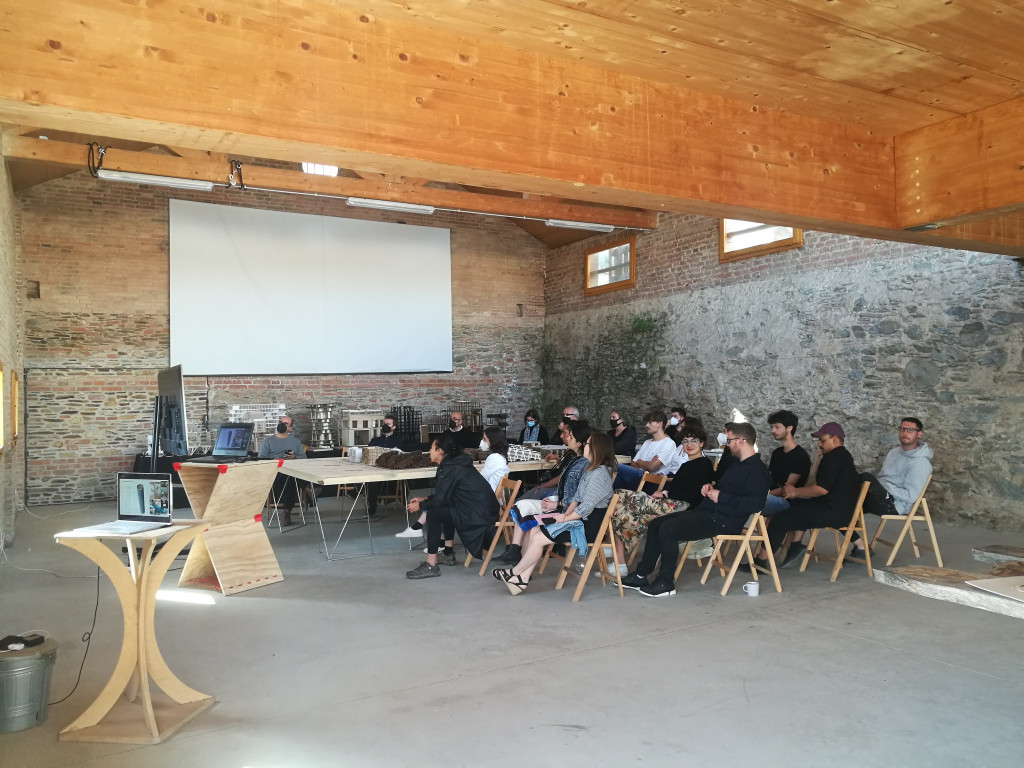To close the Winter Term, the students of the Master in Advanced Ecological Buildings and Biocities had the opportunity to present their projects in an exhibition with a selected group of jurors, such as: Carles Enrich, Jon Tugores, Miquel Rodríguez, Mathilde Marengo, Willy Muller, Vicente Guallart and Fabio Capra Ribeiro.
The objective of these projects was to develop a new urban block based on a zero-emissions city model, located in a future neighborhood to be developed adjacent to the Besos river in Barcelona. According to UN data, over the next 30 years, the world’s urban population will grow by more than 2 billion people, which means that the equivalent of a city of five million people will have to be built every month, for the next three decades.
 Therefore, the process of urbanization throughout the world and the construction of houses and urban places are current phenomena. For this reason, it is proposed to reflect on the functional and design conditions of compact mixed use urban blocks, based on the challenges defined for the coming decades by the European Union. Indeed, as President Ursula von der Leyen has explained, Europe will be a zero emissions continent by 2050.
Therefore, the process of urbanization throughout the world and the construction of houses and urban places are current phenomena. For this reason, it is proposed to reflect on the functional and design conditions of compact mixed use urban blocks, based on the challenges defined for the coming decades by the European Union. Indeed, as President Ursula von der Leyen has explained, Europe will be a zero emissions continent by 2050.

Authors Engjëll Rodiqi and Philipp Wienkämper
Given that buildings are responsible for more than 30% of CO2 emissions in many European countries, it is essential to define a new standard not only for housing blocks but also for the urban model that sustains them. In this project, the students aimed to analyze and propose solutions for new urban blocks based on real locations and challenges, following advanced and ecological models.

Authors Paulina Sevilla and Rebecca Baierwick
The chosen place is, today, an obsolete neighborhood characterized by industrial warehouses, most of which have been transformed into urban warehouses of very little value. However, the Besos river corridor is a fundamental place in the future of Barcelona, given its function as a limit and, at the same time, as a connector of different municipalities in the metropolitan area.
 Further, areas along the river Besos are where the lowest incomes in the city and the social problems related to the marginalization of immigrant groups are concentrating. However, the river itself underwent an important ecological transformation in 2004, from a zone crossed by electrical infrastructures where sewage was discharged, to an outstanding global example of the ecological renewal of an urban river.
Further, areas along the river Besos are where the lowest incomes in the city and the social problems related to the marginalization of immigrant groups are concentrating. However, the river itself underwent an important ecological transformation in 2004, from a zone crossed by electrical infrastructures where sewage was discharged, to an outstanding global example of the ecological renewal of an urban river.
 The proposed urban model is composed of blocks which included spaces for industrial and logistical work using new digital manufacturing techniques, co-factory facilities, housing and other accommodation formats, offices, as well as spaces for food and energy production.
The proposed urban model is composed of blocks which included spaces for industrial and logistical work using new digital manufacturing techniques, co-factory facilities, housing and other accommodation formats, offices, as well as spaces for food and energy production.
MAEBB 2020/2021 students:
Akshay Sunil Mhamunkar
Amritha Prabhuram
Bart?omiej Najman
Christa Hörburger
Dafni Vakalopoulou
Engjëll Rodiqi
Fatemeh Nejatii
Ignacio Reyes Solis
Kevin Xi Lim
Marilia Fernández
Mona El Batrik
Paulina Sevilla
Philipp Wienkämper
Rebecca Baierwick
Yangchuan Tian